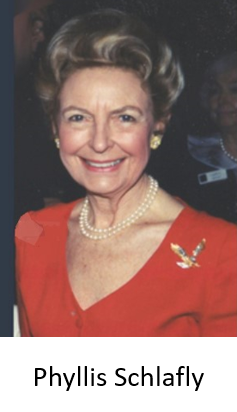Test Your Child’s Reading Skills
The inability of a large percentage of public-school children to read at grade level — or even to read at all — has been well publicized, particularly since the most recent National Assessment of Education Progress (NAEP) scores were released earlier this year.
But parents of students enrolled in any school, be it public, private, homeschool, or other, can easily discern how well their children are reading by using the First Reading Test Phyllis Schlafly created years ago in conjunction with her First Reader phonics instruction program. A First Reader Workbook and activity book can also be used to accompany the First Reader to enhance the efficacy of the instruction.
 For those unfamiliar with First Reader, it is a proven method of teaching young children to read using logical steps that gradually build skill by putting sounds and syllables together to form words, then sentences, then paragraphs and stories, etc. It is a user-friendly, colorful text that is easy for a child and parent/teacher to follow. Phyllis wisely recorded step-by-step First Reader Audio Instructions to make the task of teaching reading even easier.
For those unfamiliar with First Reader, it is a proven method of teaching young children to read using logical steps that gradually build skill by putting sounds and syllables together to form words, then sentences, then paragraphs and stories, etc. It is a user-friendly, colorful text that is easy for a child and parent/teacher to follow. Phyllis wisely recorded step-by-step First Reader Audio Instructions to make the task of teaching reading even easier.
Phyllis emphasized that learning to read “sets a child on the road to a good education.” She knew that a solid foundation in phonics instruction helps protect kids against the flawed methods used in most schools, that of memorizing or guessing at words by looking at pictures without being taught how to correctly master sounds and syllables.
In 2015, just over a year before she died, Phyllis wrote: “If your child is not a good reader, chances are he is not stupid or afflicted with some brain disability. It’s much more likely that your child was never properly taught how to read.” She added that Common Core, which was the relatively new top-down education system at the time and continues to wreak havoc today, “uses what is called the ‘sight’ or ‘whole-word’ method. That means students are taught to memorize a few dozen frequently used words, mostly one-syllable words, guess at other words, and predict the content of the article from pictures on the page. If children do not catch on to this system, parents are falsely told that their children were born with a disability called dyslexia. Students who become disorderly are given drugs to curb the problem.”
But as Phyllis would have concurred, the sight method did not debut with Common Core, but was a repeat of the same failed method that crept into the U.S. education system decades ago. The fact that the NAEP scores have steadily declined over these same decades proves the indisputability of Phyllis’ philosophy of teaching reading.
Phyllis believed the best way for parents to ensure their children won’t develop bad habits when they start school is to teach them to read before they enter first grade. She recommended “three 20-minute sessions every day for six months,” promising that parents, grandparents, or other caregivers “would be amazed at the result.”
Even if a child is already learning the failed “look-say” or sight method in school, he or she can learn to read from a good phonics program and the systematic instruction described above.
The First Reading Test can help parents determine their child’s reading skill level. Once they have a sense of where their child stands, they can begin instruction at home using First Reader or Turbo Reader (for older learners).
Click on this link to access a printable copy of the First Reading Test.
Want to be notified of new Education Reporter content?
Your information will NOT be sold or shared and will ONLY be used to notify you of new content.
Click Here
Return to Home Page
